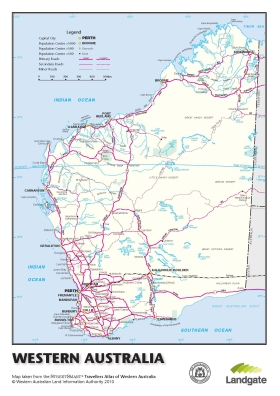
A more current and comprehensive topographic record of Western Australia will be the product of a new partnership between Landgate and the Department of Environment and Conservation (DEC).
The two agencies will combine resources and consolidate information from their separate data sets into one database, to provide a single source of topographic data for the State. Implemented using Esri’s 9.3.1 software, the project will reduce costs, duplication, inconsistencies and time spent on maintenance.
Landgate Manager, Location Knowledge Services, Lesley Arnold said the collaboration would result in a richer record of Western Australia’s roads, water courses, infrastructure and terrain.
“Landgate is the Western Australian land information authority and its Topographic Geodatabase was designed to be an extensible state-wide model,” Dr Arnold said.
“DEC’s data set has information specific to maintaining and managing its assets, such as roads, camping grounds, picnic sites, rest areas and bush tracks.”
Landgate and DEC datasets are currently maintained in isolation, with the agencies exchanging data manually for information updates.
DEC Manager Geographic Information Services Operations, Richard Ford said DEC staff will now use a virtual desktop environment to update Landgate’s database externally, enabling changes to be integrated immediately.
“DEC staff are best placed to ensure that topographic data over their area of management is correct,” Mr Ford said.
“This collaborative approach will progressively eliminate the inconsistencies that result from disparate data sets being used by different agencies.”
A permanent replica of Landgate’s database will be housed on the DEC network to allow DEC staff full-time access to Landgate’s geographic information system. Any changes made to Landgate data will be automatically replicated in DEC’s information technology environment.
Landgate Chief Executive, Mike Bradford said the partnership aligned to objectives in Western Australia’s Location Information Strategy, which aims to maximise the value of location information to the State.
“This project will streamline the way we capture topographic information, and improve the quality and currency of data,” Mr Bradford said.
“Improved data enables government, industry, emergency services and the wider community to make better decisions.”







